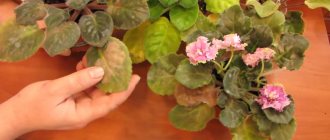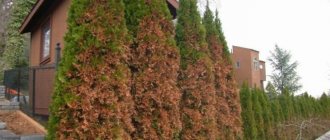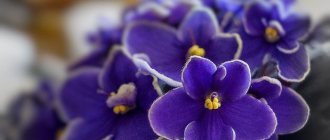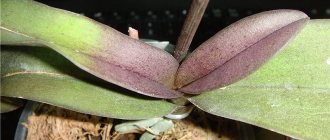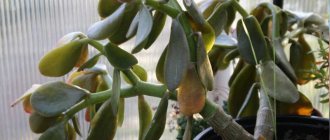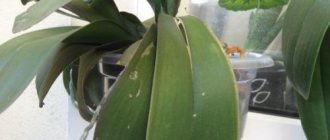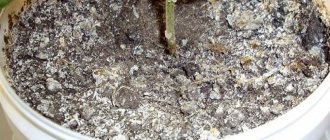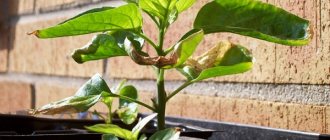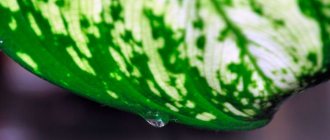Fans of lush indoor plants often admire the Dieffenbachia, a guest of their rainforests in America.
This cute flower can grow up to 2 meters in height, decorating a living space. Wide green leaf plates are decorated with variegated patterns, from which it is impossible to take your eyes off. They amaze the imagination, but unfortunately, various Dieffenbachia diseases bring a lot of grief to their masters. Reasonable care of the plant contributes to the successful development of Dieffenbachia, as a result of which new leaves regularly appear on it. What to do if a tropical beauty gets sick? How to help a silent “household member”? First of all, it is important to gain knowledge, and only then take action.
According to experts, Dieffenbachia is considered a poisonous plant. When it comes into contact with a mucous part of the body, its juice causes irritation and even allergies. It is especially dangerous for children.
Optimal conditions for the development of Dieffenbachia at home
Although Dieffenbachia is a favorite resident of the window sills of many homes and offices, it still requires a lot of attention to care. Dieffenbachia is very capricious, so those who grow it often face various difficulties. You need to choose a place for a pot with an indoor flower based on the color of the leaves. If they are monochromatic, then the plant should be placed in the back of the room, away from the light. Dieffenbachia tolerates shade well . But in this case, she will need additional lighting, especially in winter. In any case, it is necessary to avoid windows on the south side, since direct sunlight may cause the plant to die.
The correct development of a tree also depends on temperature. So for the warm season, the permissible norm in the room should be + 21 + 25. In winter and autumn, the air temperature should be from +15 to +20. There should be no drafts, wind or sudden temperature changes in the places where the flower pot is located. To water Dieffenbachia, you need to use pre-prepared water that has been infused for at least a day. In the cold season, you need to water the soil after its top layer has dried out a little. In summer and spring, watering should be regular and abundant. The soil should not dry out.
Dieffenbachia responds very well to water treatments ; for this it needs to be periodically sprayed with a spray bottle. This must be done so that excess moisture does not fall on the soil; it can be covered with polyethylene. If the plant is already large, the leaves can be wiped with a damp cloth. For the proper development of Dieffenbachia, feeding is necessary. To do this, you need to select fertilizers that do not contain lime. The procedure is carried out on average three times a month.
Flowering and mystical properties
Dieffenbachia blooms quite rarely in our harsh climate. And maybe it's for the better. After all, people tend to believe that the flowering of this plant is a bad omen.
Although practice shows that in order for a plant to bloom, it is enough to comply with a large number of complex conditions related to care, humidity and temperature, not everything is so simple.
Experts in bioenergy believe that the worse the emotional background in a family or team, the better the tropical guest feels. That is why its flowering is considered an indicator of a deterioration in relations and warns owners about impending changes, which will most likely be negative.
Perhaps this belief is also due to the fact that after the plant has flowered, it sheds most of its foliage. This is necessary to ensure that its fruits have enough nutrition and moisture.
But then again, things could turn out to be much more positive. And although this answers the question of why you can’t keep Dieffenbachia at home, signs can also be interpreted in different ways.
This behavior of a flower can be considered from an energetic point of view as renewal. And you shouldn't be afraid of it. Change is not always bad. But perhaps it’s worth thinking about it, reconsidering your views, relationships and clearing the room of negativity, garbage and stale things, which will harmonize the energy space.
Why do Dieffenbachia leaves turn yellow and dry?
Since the exotic guest is quite capricious, her leaves often turn yellow and dry. This can be caused by both disturbances in the care process and diseases, which are quite common for this particular type of plant. Why do plant leaves turn yellow?
Violation of care rules
Several factors can lead to violation of plant care rules. In the first place is improper watering - it can be either excessively abundant or insufficient. The air in the room where Dieffenbachia is located can be very dry. This also applies to office premises, where the lighting is in most cases artificial, and the flowerpot itself is on the windowsill, where sunlight practically does not penetrate. No matter how strange it may sound, pets may also be involved in violations of plant care . They may chew or scratch the leaves of the flower, but the damage may not be noticeable at first glance. In this way, an infection can be introduced that interferes with the normal development of the plant.
Dieffenbachia diseases and methods of their treatment
Dieffenbachia, like any living creature, can get sick and be affected by infections. Fungal, bacterial and viral diseases can interfere with the normal development of the plant. Leaf spotting, which forms first at the edges of the foliage and then spreads to the entire blade, can be caused by improper room temperature or high humidity. Overwatering and accumulation of liquid in the soil can also To avoid such phenomena, it is necessary not only to reconsider the systematicity of irrigation, but also the water itself that is used for these purposes.
Anthractic disease - with a fungal disease, the stems and leaves are affected by small orange spots, which over time merge into one large lesion, leading to complete drying of the leaf. It occurs for the same reasons as regular spotting. Treatment of affected areas of the plant is carried out by spraying Dieffenbachia with fungicides.
Fusarios is an infectious flower disease that affects the roots and basal part of Dieffenbachia. Long orange spots appear on the affected areas, which lead to drying out and death of the plant. The appearance of such an infection is caused by overdried soil and lack of fertilizers. To cure a tree, you need to remove the roots from the pot, rinse it under water and get rid of the contaminated soil. Then spray the roots several times with preparations containing fungicides and transplant the plant into new soil.
How to deal with Dieffenbachia pests (video)
Root rot can also lead to yellowing and drying of leaves . To do this, as in the previous case, it is necessary to dig out the roots and clean them of infection. If the roots are black and have an unpleasant odor, this is a sure sign of disease. It can be caused by overwatering. To treat Dieffenbachia, you need to clean the infected roots, replant it in a new place, treat the soil with a fungicide and reconsider the watering.
The leaves of the plant may be subject to bacteriosis, during which watery spots with clear boundaries along the edges appear on the affected areas. The development of this disease can be triggered by infection during transplantation or cuttings. To get rid of the infection, you need to spray the plant with preparations containing copper.
Dieffenbachia pests affecting the condition of leaves
Despite the fact that Dieffenbachia is partly a toxic plant, it is also susceptible to attack by pests that damage it and affect the foliar system. The most common parasites include:
- spider mite
- aphid
- mealybug
- scale insect
The methods of control for each type of parasite are the same - it is necessary to thoroughly treat the trunk and leaves of the indoor flower with a soap solution, and then wash it off the surface of the flower with ordinary warm water. After this, you need to treat the Dieffenbachia with a specially prepared insecticide solution. If there are two or more plants in the house, it is necessary to treat the remaining home window inhabitants, since parasites tend to move from one plant to another.
Natural causes
Natural causes can also lead to yellowing of Dieffenbachia leaves. In general, this is a natural process that affects older lower leaves. However, when the first spots and dry areas appear on the leaves, there is no need to rush to get rid of them and cut them off at the root. You need to wait until the leaves are completely dry and begin to fall off. Flower growers claim that pruning leaves causes great harm to the plant.
What does a scale insect look like?
The eggs of the scale insect are oval in shape; in some species they are elongated oval, usually white or light gray in color, gradually darkening to light brown. The eggs are very small, approximately 0.1-0.3 mm, and look like worms under a microscope.
The first instar larva is called a vagrant
- it has a flattened oval body, up to 0.3 mm long, yellowish in color, three pairs of legs, antennae, eyes. In many species of scale insects, you can tell by the color of the larva what it will regenerate into. So, in the mulberry scale, the strays are white and red, the white ones grow into females, and the red ones into males. The second instar larva is larger. Its body is white or gray, the back of the body is usually darker, its dimensions reach 0.5 mm. At this point, the female larva has no legs, antennae, or eyes. It is distinguished from an adult individual only by its size and lighter coloration of the shield. Among several thousand species, there are scale insects of a slightly different appearance - some have females with an almost transparent body, the shield is invisible, they seem to be glassy; others have very irregularly shaped bodies, like blobs; still others have a rich black shield. The morphological stages of development of scale insects may also differ; for example, some tropical scale insects do not have an egg stage. There is no point in describing a specific type of scale insects; once you see them in photographs or in person, you will no longer confuse them with anyone else.
Why do drops form on Dieffenbachia leaves?
It happens that drops form on the leaves of Dieffenbachia; flower growers call this “Dieffenbachia crying.” In most cases, this is a natural process in which moisture is released through special mouths - hydathodes. If the phenomenon occurs quite often, you need to reduce the amount of watering, but do it carefully to prevent the soil from drying out.
Low air humidity
With insufficient watering and low humidity, Dieffenbachia leaves begin to turn yellow from below. First the tips turn yellow, then the entire leaf blade. Such plates dry out and fall off over time. This is often accompanied by loss of color and lightening of the upper leaves.
Often in a city apartment it is difficult to create the necessary air humidity for Dieffenbachia . In summer, the room is quite hot and dry; in winter, during the heating season, the air is dried out greatly by heating radiators. Therefore, for many inexperienced gardeners, Dieffenbachia is a long bare trunk with several leaves at the top.
For a plant to maintain its beauty, regular watering and spraying is not enough. It is useful to place it in a tray with a damp substrate: expanded clay, sand or moss. The substrate will humidify the air near the plant and also help preserve its green mass.
Dieffenbachia leaf propagation technology
The beauty of Dieffenbachia is that it is quite easy to propagate. An adult plant, more than two years old, is better suited for this. It is better to cut the leaf from the very top and as close to the trunk as possible , leaving a few buds on it. To avoid excessive sap production, reduce watering a few days before pruning. It is better to trim the cuttings with a sharp serrated blade so as not to injure the internal fibers. The cut top can be placed in water or immediately planted on ready soil.
Strong hydration
Excessive moisture leads to fungal diseases of the plant
Excessive soil moisture easily leads to various fungal diseases. When the roots rot, the leaves of the plant first fall down and then begin to turn yellow. Moreover, the plates throughout the plant turn yellow.
In case of rotting, Dieffenbachia needs an emergency transplant and reduced watering , and sometimes this does not help. We have to cut off and root the surviving tops.
To protect the plant from rotting, it is necessary to strictly adhere to its watering regime. You can’t overwater the flower, but you shouldn’t overdry the earthen ball either, as this can cause the death of the plant. Keeping the soil moist but not wet is quite simple. Watering is carried out only after the top layer of soil in the pot has dried to a depth of 2-3 cm.
Sometimes plants turn yellow as a result of root rot and with the correct watering regime. This happens when the soil composition is incorrectly selected. The soil for Dieffenbachia should be light. In heavy soils, water stagnation and root rot are possible.
4.Varieties:
4.1. Pleasant or lovely Dieffenbachia - Dieffenbachia amoena
A large, attractive, tree-like variety that has recently gained great popularity in indoor floriculture. These large-leaved plants have dark green, stiff trunks that can grow up to 2 m in height. The leaf blades are dark green, glossy, oblong-oval, and can reach 50 cm in length. The surface of the leaf blades is covered with light yellow and light green strokes diverging from the center, while the central vein remains dark green. Often grown as a tub or floor plant.
↑ Up,
4.2. Dieffenbachia seguine
Spectacular, decorative foliage plants up to 1 m high. The stems are thick, reed-like, and bear traces of fallen old leaves. The leaves are soft, oval, up to 25 cm long. The leaf blades are dark green, glossy, monochromatic or may have light stripes diverging from the center, reminiscent of frost.
↑ Up,
4.3. Dieffenbachia oerstedii
An extremely hardy and at the same time attractive variety. The plants have strong, often low stems and large, glossy, dark green leaves. The leaf blades are oval, entire, with a central vein highlighted in a light shade.
↑ Up,
4.4. Dieffenbachia bowmannii
Plants that, in favorable conditions, can reach a height of 1.2 - 1.8 m. The leaves are elliptical, dark green, with radiating light strokes or a white center.
↑ Up,
4.5. Dieffenbachia Camilla - Dieffenbachia Camilla
This is one of the most common and colorful varieties of bushy Dieffenbachia. The leaves of the plant are rough and wide with a creamy center and a dark green variegated border along the edges of the leaf blades. "Camilla" is a fairly low-growing bush and reaches a height of 0.6 - 1.5 m.
↑ Up,
4.6. Dieffenbachia maculata Compacta
A variety of spotted bush Dieffenbachia, which has a modest size and is well adapted to growing at home with limited space. The bushes are dense, lush, up to 50 cm high, with large green, speckled leaves with a white or cream center.
↑ Up,
4.7. Dieffenbachia Vesuvius
A small, showy plant with oblong-lanceolate leaves. The main tone of the leaf blades is white, with small green strokes randomly scattered across it, which merge into a continuous stripe along the edge of the leaf blades.
↑ Up,
4.8.Dieffenbachia picta
A large decorative deciduous evergreen plant, very popular in indoor cultivation. This species is distinguished by the presence of an erect trunk, on which there are very large oblong-oval dark green, glossy leaves. The leaf blades have light green stripes that radiate from the central vein. Growing this species requires a lot of space.
↑ Up,
4.9. Dieffenbachia Tropic Snow
Tall variety - plants reach a height of 1.8 m, originating from the 60s of the 20th century. The leaves are large, dark green with a white center and light green stripes. The color of the leaves resembles snow that has dusted the plant a little.
↑ Up,
4.10. Dieffenbachia Leopoldii
A very bright representative of the genus, it is an evergreen perennial plant with large, dark green leaves. The leaf blades are glossy, gleaming with a blue tint, the central vein is expressed in a slightly lighter shade. Small specks of light green color are evenly scattered over the entire surface of the leaves. As the plants age, they bare the lower part of the stems and resemble a false palm.
↑ Up,
More about the flower
Indoor Dieffenbachia has a fleshy, thick stem with large oval leaves. Most varieties grow from the top, but some have a growing point at the base, so they form spreading bushes.
Dieffenbachia blooms at home extremely rarely. This does not make the plant less popular, since it is an ornamental foliage. Its main decoration is not the inflorescences, but the beautiful leaves.
Other Possible Problems
Dieffenbachia leaves often turn yellow when exposed to direct rays. In this case, burns form on the surface, which in the future can lead to the complete death of the leaf.
Note! The flower should stand in the house in partial shade. In summer, the pot is placed in the southeast, where the sun hits the plant only in the morning
If you can’t move the container with the bush to the right place, you can leave it in the south, but be sure to shade it. In winter, on the contrary, intense lighting is required. Flower growers often use artificial light from phytolamps. It is best to place the plant in the most illuminated place in cold weather. In winter, the sun's rays do not harm the bush, so you should not be afraid of burns.
The bush may turn yellow due to the small pot. In this case, it is necessary to transplant into another container. Dieffenbachia grows well in fertile soil with a slightly acidic environment. If the substrate is chosen incorrectly, the growth of the bush slows down and the foliage turns yellow.
When all conditions are met, but the leaves are still covered with yellow spots, this indicates natural aging. Experts recommend rejuvenating the plant through cuttings. The bare trunk of the bush is cut into cuttings, leaving a small part of the stem. The cuttings are sent into water and wait for new roots to appear. Then the seedling is transferred to a permanent place in a pot.
All pathological conditions must be treated when the first symptoms are detected. Otherwise, the plant may die completely. It is recommended to fertilize, monitor the lighting and periodically inspect the bush for pests.
